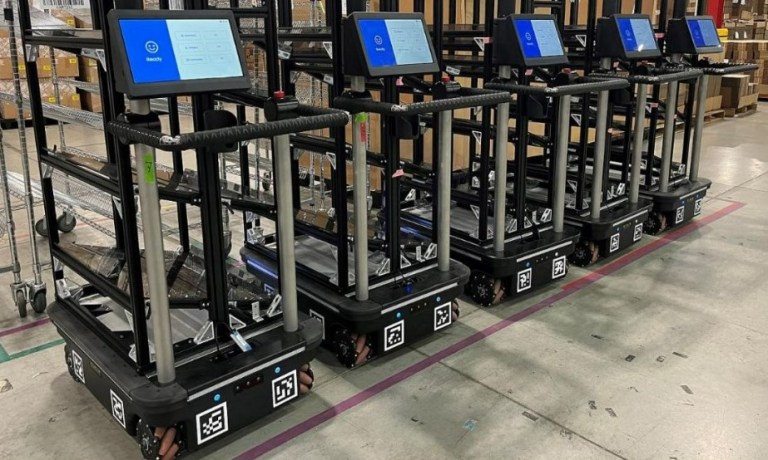
The rise of artificial intelligence (AI) holds the promise to fully digitize all manner of verticals, all manner of workflows …
… and in the age of eCommerce, advanced technology in the service of efficiency can help transform logistics.
Ben Gruettner, vice president of revenue at Robust.AI, told PYMNTS that robots and AI, in tandem with, well, the human touch, can keep up with changing end-market demands and the changing workflows that demand flexibility.
“Generative AI is arriving on the warehouse floor faster than many anticipated,” he told PYMNTS, adding that “There’s no either/or when it comes to workers and robots.”
Used collaboratively, much in the way that warehouse workers today make use of forklifts, pallet jacks and hand trucks, robots can help with “filling the job gap and helping warehouses and fulfillment centers deal with increasingly high demand.”
As reported earlier this year, DHL Supply Chain partnered with Robust.AI to develop and deploy a fleet of warehouse robots — specifically, ‘Carter,’ a collaborative mobile robot — that the companies said provide “flexible warehouse material handling automation.”
Through the joint efforts, the robots handle a range of functions, starting with optimizing the picking process. AI helps the robots learn and adapt to real-time warehouse conditions, optimizing workflows and maximizing productivity. The robot’s embedded sensors and AI capabilities generate data to improve warehouse layouts, staffing, and inventory management.
Gruettner said that solutions like Carter “help support the labor companies intend to keep,” adding, “We are providing a solution that can be easily deployed into existing operations, aiming to empower and enhance the productivity of warehouse workers within DHL.”
AI, he added, helps ensure that the robots adapt as third-party logistics operations change — because warehouse volume and customer profiles change throughout the year.
The robots he said, are “autonomous allies with zero-friction adoption,” he told PYMNTS.
The remarks from Gruettner come in the wake of separate coverage by PYMNTS, where as noted here, Akash Gupta, CEO of GreyOrange, said that only about 10% to 15% of warehouses have mechanized at least some of their processes. And a relatively scant mid-single-digit percentage point slice of warehouses might be deemed to be heavily automated.
He told PYMNTS that the former, traditional ways of managing inventory in “batches” are no longer enough to satisfy the demands of omnichannel commerce. AI, he said, can offer up “an intelligent software orchestration layer” that help manage the flow of inventory and data.
In a separate interview with PYMNTS, Yoav Amiel, chief information officer at freight brokerage platform and third-party logistics company RXO, told PYMNTS, “If you look at the maturity of AI models over the years, if you go back 20 years, AI was more around recognition, and gradually that evolved into coming up with insights and serving as a recommendation engine.”
He added, “Today, AI is capable of task completion. … If you think about warehouse inventory planning, workforce planning, all of these activities, AI can make these processes much more efficient overall.”